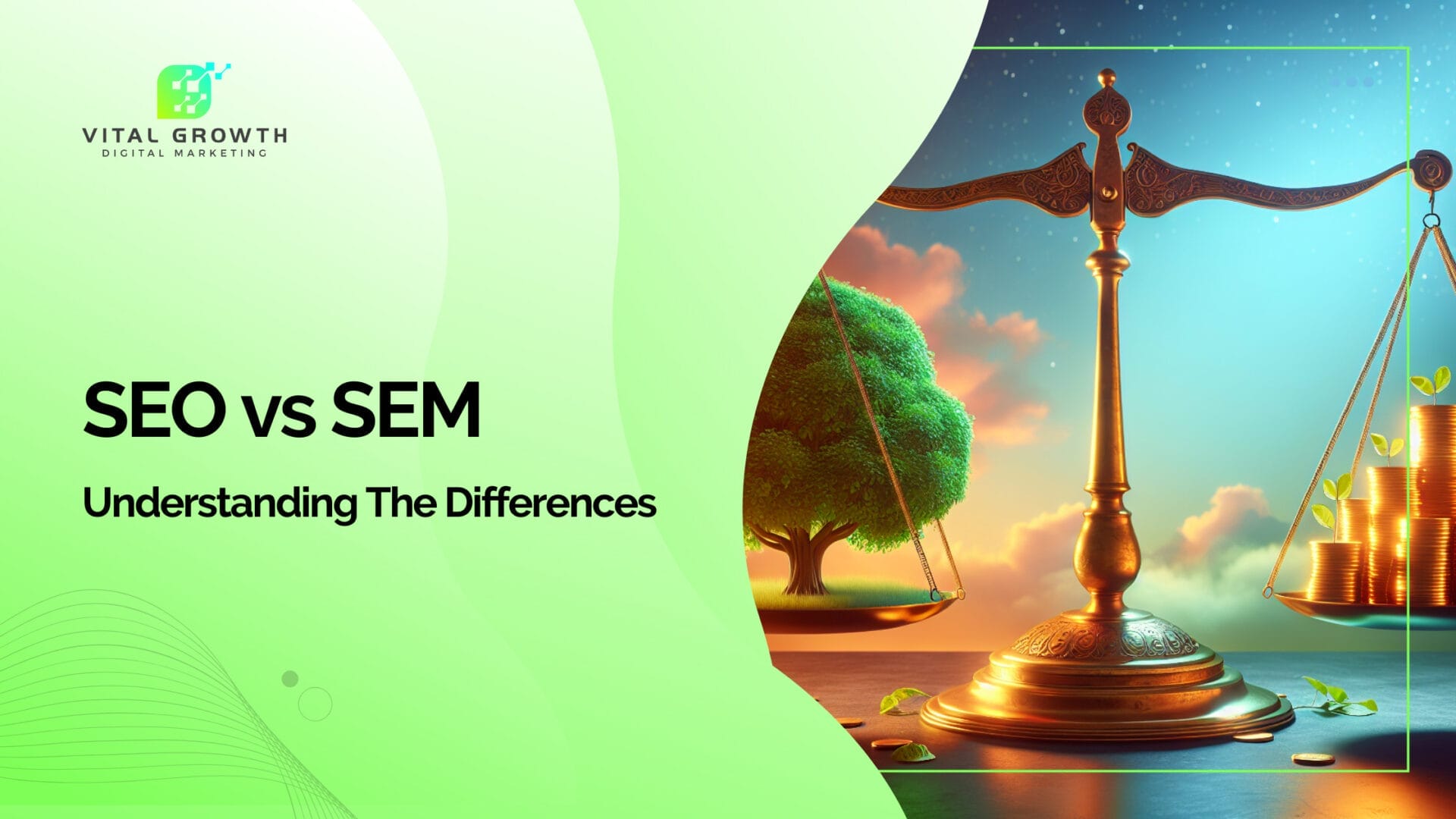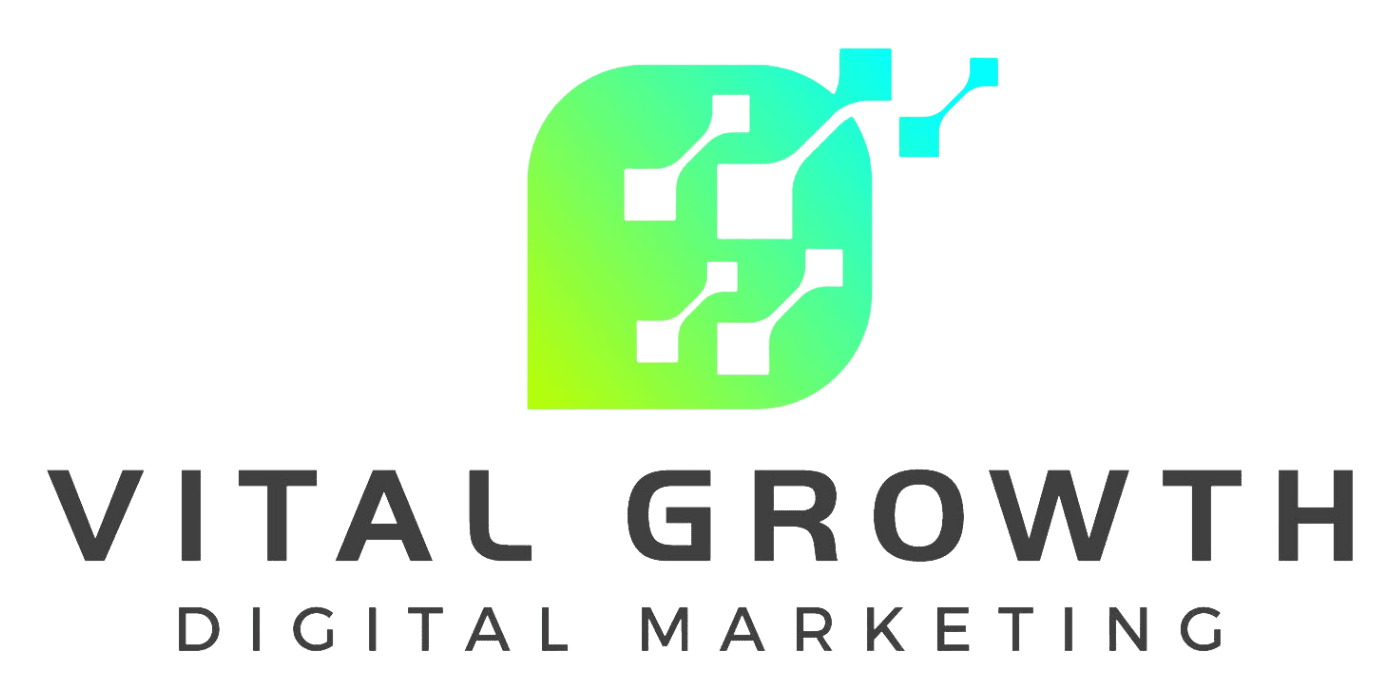Why are blogs important for your website’s success?
Having a website is no longer enough to stay ahead of the competition. You need to engage your audience with high-quality content, and that’s where blogging comes in. Regularly crafting, creating, and publishing in-depth blog posts can improve your website’s search engine rankings, increase user engagement, and establish thought leadership in your industry.
In this blog post, we’ll explore the key benefits of blogging and provide practical tips for creating a successful blog that drives traffic and conversions. So if you’re wondering why blogs are important and how they can benefit your business, keep reading!
What Is A Blog?
A blog is a website or online platform that allows individuals or organizations to share their ideas, opinions, and expertise with their target audience through written content. Blogs typically feature posts arranged in reverse chronological order, with the most recent post appearing first.
Blogs can cover a wide range of topics and can be used for various purposes, such as personal journaling, political commentary, news reporting, and content marketing. They can also support businesses in customer education, brand building, and lead generation.
Blogs typically include features such as comment sections, RSS feeds, and social media integration to encourage interaction and sharing with readers. They are often updated regularly, with posts ranging from short, informal updates to longer, more in-depth articles.
In recent years, blogs have become important to many businesses online marketing strategies. By creating high-quality, relevant content that addresses their target audience’s pain points, businesses can attract more traffic to their website, establish thought leadership, and build relationships with potential customers.
Why Blogs Are Important For Your Business
Blogging can bring numerous benefits to your business. Here are some of the most significant ones:
- Increased website traffic: Blogging helps attract more visitors to your website. Each new blog post allows you to target long-tail keywords and improve your search engine rankings. Your website will appear higher in search results, leading to increased visibility and more clicks from potential customers.
- Improved customer engagement: Blogging allows you to communicate with your customers more personally. By sharing valuable content and encouraging comments and feedback, you can build relationships with your audience and establish yourself as a trusted resource in your industry.
- Thought leadership: Blogging can help you establish thought leadership in your industry. By sharing your insights and expertise, you can position yourself as a leader in your field and gain credibility with your audience.
- Cost-effective marketing: Blogging is a cost-effective way to market your business. Unlike traditional advertising, which can be expensive and short-lived, your blog content can continue to drive traffic and generate leads for months or even years after it’s published.
- Increased lead generation: Blogging can help you attract new leads and nurture existing ones. By creating content that addresses your customers’ pain points and offers solutions to their problems, you can position yourself as a helpful resource and encourage them to take the next step in their buyer’s journey.
- Competitive advantage: Blogging can give you a competitive advantage in your industry. By creating high-quality, informative content, you can differentiate yourself from your competitors and position your business as a leader.
How To Create A Successful Blog That Drives Traffic and Conversions
Creating a successful blog that drives traffic and conversions requires careful planning and execution. Here are some steps to follow:
- Define your target audience: Before creating content, you need to know who you’re writing for. Develop detailed buyer personas that represent your ideal customers, and use them to guide your content strategy.
- Develop a content strategy: Your content strategy should be based on the needs and interests of your target audience. Brainstorm ideas for blog posts, and organize them into a content calendar that outlines the topics, publishing schedule, and promotion strategy.
- Write high-quality, engaging content: Your blog posts should be informative, well-written, and engaging. Use a mix of text, images, and multimedia to keep readers interested, and make sure your content is optimized for SEO.
- Promote your blog: Once you’ve published your blog post, promote it through social media, email marketing, and other channels. Encourage readers to share and comment on your content to increase engagement and reach.
- Monitor and measure results: Use analytics tools to track the performance of your blog posts. Pay attention to metrics like page views, time on page, bounce rate, and conversion rate. Use this data to optimize your content strategy and improve your results.
- Optimize for conversions: Your blog should be designed to drive conversions. Use calls-to-action (CTAs) to encourage readers to take action, such as signing up for your newsletter, downloading a resource, or making a purchase. Place your CTAs strategically throughout your blog post and website to maximize their impact.
The Art of Writing Great Blog Posts: Tips and Techniques
Writing great blog posts is both an art and a science. Here are some tips and techniques to help you craft compelling, informative, and engaging blog content:
Choosing the right topic for your blog post
Choosing the right topic for your blog post is critical to its success. Here are some tips for finding the right topic:
- Conduct keyword research to identify popular and relevant topics
- Analyze your competitors’ blog content to find gaps in your industry
- Consider your buyer personas and what topics will be most relevant to them
- Leverage customer feedback and questions to inform your topic selection
Crafting a compelling headline
A great headline can make or break your blog post. Here are some tips for crafting a compelling headline:
- Use numbers, questions, or strong adjectives to grab attention
- Keep it short and to the point
- Use action verbs and active voice
- Make sure the headline accurately reflects the content of the post
Structuring your blog post for maximum impact
Structuring your blog post is essential for making it easy to read and engaging for your audience. Here are some tips for structuring your blog post:
- Use subheadings to break up your content and make it easier to skim
- Keep paragraphs short and use white space to make the content easier to read
- Use bullet points and numbered lists to organize information
- Include a strong introduction and conclusion that summarizes the key points of the post
Writing for your target audience
Writing for your target audience is critical to the success of your blog. Here are some tips for writing content that resonates with your audience:
- Use a conversational tone that’s easy to read and understand
- Address your audience’s pain points and challenges
- Provide solutions and actionable advice
- Use examples and case studies to illustrate your points
Using visuals and multimedia to enhance your blog post
Using visuals and multimedia can make your blog post more engaging and easier to read. Here are some tips for using visuals and multimedia in your blog post:
- Use images and graphics to break up your content and make it more visually appealing
- Use videos and animations to explain complex concepts
- Include infographics and charts to present data in a visually appealing way
- Use pull quotes and tweetable quotes to make key points stand out
How to Improve Your SEO Rankings with Blog Posts
Here’s how to leverage your blog to improve your SEO:
Understanding how search engines work
Before improving your SEO rankings with blog posts, it’s important to understand how search engines work. Search engines use complex algorithms to determine the relevance and authority of web pages based on factors like keywords, links, and user experience. Understanding these factors can help you optimize your blog content for better SEO.
Keyword research and optimization
Keyword research and optimization are essential for improving your blog’s SEO. Here are some tips for optimizing your blog content for keywords:
- Conduct keyword research to identify relevant and high-traffic keywords
- Incorporate keywords naturally throughout your blog post, including in the title, subheadings, and body text
- Use variations and long-tail keywords to capture more specific search queries
- Avoid keyword stuffing or over-optimizing your content
On-page optimization for blog posts
On-page optimization refers to the techniques used to optimize individual web pages for search engines. Here are some tips for optimizing your blog posts for better SEO:
- Use descriptive and optimized meta titles and descriptions
- Optimize your images with alt tags and relevant file names
- Use header tags (H1, H2, H3) to structure your content and make it easier to read
- Optimize your URLs to include relevant keywords
Link-building strategies for blogs
Link-building is a crucial aspect of SEO that involves getting other websites to link to your content. Here are some link-building strategies for blogs:
- Create high-quality, shareable content that naturally attracts links
- Guest post on other relevant blogs to gain exposure and build links
- Participate in online communities and forums to share your content and build relationships
- Use internal linking to improve your website’s overall authority and relevance
- Monitor your backlinks and disavow any low-quality or spammy links
Including internal linking in your link-building strategy can be an effective way to boost your SEO rankings. By linking to other relevant content on your website, you can help search engines understand the structure and hierarchy of your website and improve the user experience for your visitors.
The Benefits of Blogging
Blogging can bring numerous benefits to individuals and businesses. Here are some of the most significant ones:
Increased brand awareness and credibility
Blogging is a powerful tool for building brand awareness and credibility. By regularly creating high-quality, informative content, you can establish yourself as a thought leader in your industry and gain the trust and respect of your target audience.
Improved customer engagement and loyalty
Blogging can also improve customer engagement and loyalty. By providing valuable content that addresses your customers’ pain points and interests, you can build a relationship with your audience and keep them coming back for more.
Establishing thought leadership and expertise in your industry
Blogging can help establish thought leadership and expertise in your industry. By regularly sharing your insights and expertise through blog posts, you can position yourself as a leader in your field and gain credibility with your audience.
Increased website traffic and lead generation
Blogging is a cost-effective way to drive traffic to your website and generate leads. By creating optimized content for search engines and social media, you can attract more visitors to your website and increase your chances of converting them into leads and customers.
Cost-effective marketing that delivers long-term results
Blogging is a cost-effective marketing strategy that can deliver long-term results. Unlike traditional advertising, which can be expensive and short-lived, blogging allows you to create content that continues to drive traffic and generate leads for months or even years after it’s published.
Engage Your Audience
Engaging your audience is crucial for building a loyal following and driving traffic to your website. Here’s how to make sure your content is engaging and shareable:
Understanding user engagement and why it matters
User engagement measures how much your audience interacts with your content. High user engagement is a strong indicator of the relevance and quality of your content and can lead to increased brand awareness, social shares, and website traffic.
How to create engaging and shareable content
Creating engaging and shareable content requires deeply understanding your audience’s needs and interests. Here are some tips for creating content that resonates with your audience:
- Use storytelling and personal anecdotes to make your content more relatable
- Use visual elements like images, infographics, and videos to break up your content and make it more appealing
- Keep your content short and to the point, and use subheadings and bullet points to make it easier to read
- Use humor and emotion to connect with your audience on a deeper level
Encouraging user comments and feedback
Encouraging user comments and feedback is a great way to increase engagement and build relationships with your audience. Here are some tips for encouraging user comments and feedback:
- Ask open-ended questions to encourage discussion and debate
- Respond to comments and feedback in a timely and helpful manner
- Use feedback to improve your content and provide better value to your audience
Promoting social sharing and participation
Promoting social sharing and participation is another key element of user engagement. Here are some tips for promoting social sharing and participation:
- Use social media buttons and share links to make it easy for readers to share your content
- Use calls-to-action to encourage readers to share your content on their own social media channels
- Run social media contests or other promotions to incentivize social sharing and participation
Measuring user engagement and optimizing for better results
Measuring user engagement is essential for understanding the effectiveness of your content and optimizing for better results. Here are some metrics to track and optimize for:
- Time on page
- Bounce rate
- Scroll depth
- Comments and feedback
- Social shares and likes
Establishing Thought Leadership with Your Blog
Blogging is a powerful tool for establishing thought leadership in your industry. Here’s how to build a reputation as a thought leader and gain the trust and respect of your audience:
What is thought leadership, and why is it important?
Thought leadership is establishing yourself as an expert in your field and providing valuable insights and guidance to your audience. Thought leaders are respected for their expertise, authority, and influence and can use their position to drive innovation, inspire change, and shape industry trends.
How to identify and capitalize on thought leadership opportunities
Identifying and capitalizing on thought leadership opportunities requires a deep understanding of your industry, your audience, and the key issues and trends that are shaping your field. Here are some tips for identifying and capitalizing on thought leadership opportunities:
- Stay up-to-date on industry news, trends, and best practices
- Attend conferences, networking events, and other industry gatherings to connect with other thought leaders and stay informed
- Leverage your own experience, expertise, and insights to provide unique and valuable perspectives on key issues and trends
Building authority and trust through your blog
Building authority and trust is critical for establishing thought leadership with your blog. Here are some tips for building authority and trust:
- Provide valuable, well-researched content that addresses your audience’s needs and interests
- Use data, case studies, and other evidence to back up your arguments and claims
- Provide clear and transparent disclosures about your affiliations, conflicts of interest, and other relevant factors
Networking and collaborating with other thought leaders in your industry
Networking and collaborating with other thought leaders in your industry can help you build relationships, gain exposure, and stay informed about the latest trends and best practices. Here are some tips for networking and collaborating with other thought leaders:
- Attend industry conferences and events to meet and connect with other thought leaders
- Participate in online communities and forums to share your insights and engage with other industry experts
- Collaborate on joint projects, content, or events with other thought leaders to expand your reach and influence
Measuring the impact of your thought leadership efforts
Measuring the impact of your thought leadership efforts’ impact is essential for understanding your blog’s effectiveness and identifying opportunities for improvement. Here are some metrics to track and optimize for:
- Website Traffic
- Social media engagement
- Backlinks and mentions from other industry experts
- Speaking invitations and other thought leadership opportunities
Blogging Strategies for Success: Tips and Best Practices
Here are some tips and best practices to help you get the most out of your blog:
Defining your blogging goals and target audience
Defining your blogging goals and target audience is critical for creating a successful blog. Here are some tips for defining your goals and audience:
- Determine your primary objectives for your blog (e.g., driving traffic, generating leads, building thought leadership)
- Identify your target audience and their key interests, pain points, and needs
- Align your blogging goals and topics with your audience’s needs and interests
Developing a content strategy and editorial calendar
Developing a content strategy and editorial calendar is key to creating a consistent and engaging blog. Here are some tips for developing your strategy and calendar:
- Set realistic goals and benchmarks for your blog, such as publishing frequency and traffic targets
- Brainstorm a list of topics and keywords that align with your blogging goals and target audience
- Plan out your content in advance using an editorial calendar or scheduling tool
- Use data and analytics to optimize your content strategy and topics over time
Creating high-quality, shareable content
Creating high-quality, shareable content is essential for building a successful blog. Here are some tips for creating content that resonates with your audience and encourages social sharing:
- Use compelling headlines and subheadings to grab your readers’ attention
- Write in a conversational tone that’s easy to read and understand
- Use visuals like images, infographics, and videos to make your content more appealing
- Incorporate storytelling and personal anecdotes to make your content more relatable
- Provide value to your readers by addressing their key interests and pain points
Promoting your blog through social media and email marketing
Promoting your blog through social media and email marketing is key to building your audience and driving traffic to your website. Here are some tips for promoting your blog:
- Share your blog posts on your social media channels, using relevant hashtags and tags to increase visibility
- Repurpose your blog content into other formats, such as videos, podcasts, or infographics, and share them on social media and other channels
- Use email marketing to promote your blog posts and encourage subscriptions to your blog
- Collaborate with other bloggers and influencers to cross-promote each other’s content and expand your reach
Blogging Platforms and Tools: Which One Is Right for You?
Choosing the right blogging platform and tools is important for any blogger or business looking to create a strong online presence. Here are some key considerations and factors to help you choose the right platform and tools for your blog:
WordPress, Squarespace, Wix, and other popular blogging platforms
Several popular blogging platforms are available, each with unique features and benefits. Some popular platforms include WordPress, Squarespace, Wix, and Blogger. Consider the features and functionality of each platform, as well as their cost, ease of use, and support options.
WordPress is a widely used, popular, and flexible platform for building and managing websites, including blogs. There are several reasons why we like WordPress:
- Flexibility and customization options. WordPress offers a wide range of customization options, including themes and plugins, which allow you to customize your blog’s design and functionality to your specific needs and preferences.
- User-friendly interface. WordPress has an intuitive and user-friendly interface, which makes it easy for bloggers of all levels to create, publish, and manage their content.
- SEO-friendly features. WordPress marketplaces offer several plugins that make it easy to optimize your content for search engines, including customizable URLs, meta descriptions, and SEO plugins like Rankmath.
- Large and active community. WordPress has a large and active community of developers, designers, and users, which means that there are plenty of resources, support options, and opportunities for collaboration.
- Scalability and versatility. WordPress is a scalable and versatile platform that can grow and evolve with your business, whether you’re just starting or have a large and complex website.
Comparing the features, cost, and ease of use of each platform
When comparing blogging platforms, consider the most important features to your blog or business, such as design options, SEO tools, e-commerce functionality, and integrations with other tools and platforms. Also, consider each platform’s cost and ease of use, as well as the level of support and resources available.
Essential blogging tools and plugins for optimizing your blog
In addition to choosing the right platform, several essential tools and plugins can help you optimize your blog for search engines, improve your website’s performance, and enhance your readers’ experience. Some popular tools and plugins include Google Analytics, Yoast SEO, Jetpack, and Akismet.
Avoiding Common Blogging Mistakes
Blogging can be a powerful tool for building your brand, engaging your audience, and driving traffic to your website. However, several common blogging mistakes can hurt your efforts and limit your success. Here are some key mistakes to avoid when starting a blog:
- Not defining your target audience. One of bloggers’ most common mistakes is failing to define their target audience. Creating content that resonates with your readers and drives engagement is difficult without clearly understanding who you’re writing for.
- Focusing too much on quantity over quality. While it’s important to publish content regularly, it’s equally important to focus on quality over quantity. Poorly written or irrelevant content can harm your credibility and drive readers away.
- Neglecting SEO. Search engine optimization (SEO) is a critical component of successful blogging. Neglecting SEO best practices can make it harder for readers to find your blog and limit your potential for traffic and engagement.
- Ignoring engagement opportunities. Building a successful blog requires more than just publishing content – it also requires engaging with your audience. Failing to respond to comments, feedback, or questions can limit your community-building and growth potential.
- Not promoting your content. Promoting your content through social media, email, and other channels is essential for driving traffic and engagement to your blog. Neglecting to promote your content can limit your reach and growth potential.
- Not staying on topic. One of the most common mistakes bloggers make is writing about irrelevant topics to their niche or target audience. This can confuse readers, dilute your brand messaging, and harm your credibility and authority in your industry.
To avoid this mistake, staying focused on topics relevant to your niche and target audience is important. This means clearly defining your niche and target audience and creating content that speaks directly to their needs and interests.
By staying focused on your niche, you can establish yourself as an expert in your field, build a loyal following of readers and customers, and drive traffic and engagement to your blog. It’s also important to regularly review your content strategy and topics to ensure that they align with your niche and target audience and make adjustments to stay relevant and up-to-date.
Conclusion to Why Blogging Is Important
Blogging is a powerful tool for building your brand, engaging your audience, and driving traffic to your website. By avoiding common mistakes, staying focused on your niche, and embracing the trends and predictions for the future of blogging, you can create a successful blog that drives results for your business. We hope this blog has answered your question of why blogs are important.
At Vital Growth Digital Marketing, we specialize in helping businesses create and optimize their content strategy to achieve their marketing and growth goals. If you’re looking to build a successful blog for your business, we invite you to get in touch with us to learn more about our content creation services and how we can help you build a strong and successful online presence. Contact us today to learn more!












